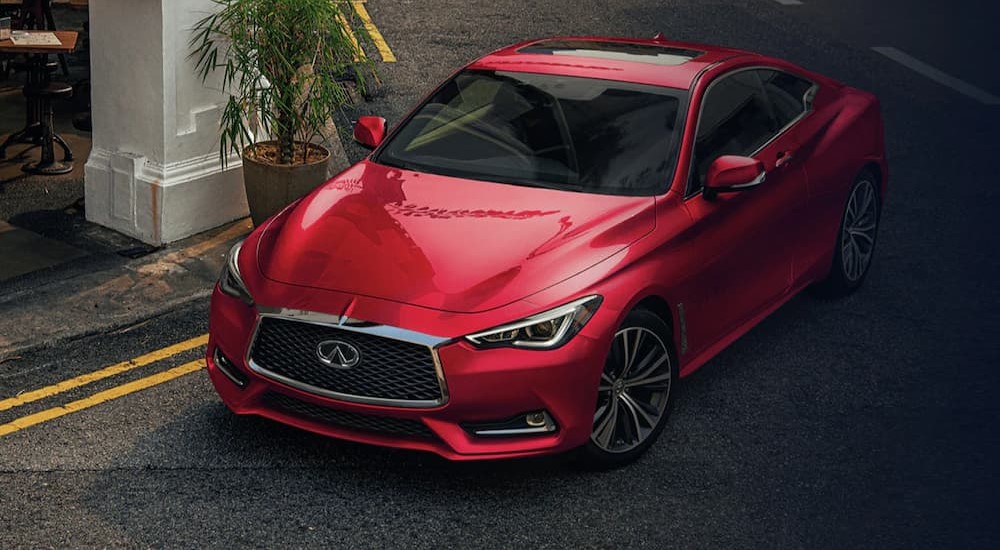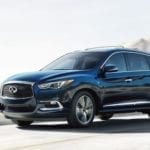When I was a little kid, I knew my cars. I knew the Hot Wheels that I could push across a kitchen table for hours on end, and I knew the cars that I saw on the street. I knew all the usual brands, although I had no idea of the relationships they shared, but I would later learn that one had escaped my notice. Despite my keen attention to detail regarding the cars on the street, for all those years I always wondered what, exactly, it was that they made and sold at the nice-looking building with an “Infiniti” sign in my hometown.
That’s how under-the-radar Infiniti was as a brand, and how tenuous their grasp on the market had been. A kid with nothing better to do than literally track how many Acuras I saw in a day had no idea Infiniti existed while I saw their dealership on a regular basis. Though they finally made a huge splash with the Skyline-based G35 in the 2000s, that momentum is now long gone, and it seems that Infiniti has once again fallen into obscurity. The cancellation of the Q60 sports coupe now raises a reasonable question: Will Infiniti survive?
Cloudy with a Chance of Lemons
There are reasons for hope, and reasons for doubt. I’m going to start by pressing “X” for doubt. The company’s internal affairs have been a total gong show since 2019. There are examples of similar messes in the failures of several well-established marques which hint that Infiniti is past the point of no return.
Take Oldsmobile, which failed in 2004 and can’t blame the Great Recession of 2008 for getting the ax in the bailout, to illustrate the perils of existing as an uninspiring brand of badge-engineered markups. Once GM turned from designing parts bin specials to shamelessly re-badging Chevrolets, Oldsmobile was doomed. There simply wasn’t any reason to spring a little extra cash to spice up the bland cars. This is, of course, Infiniti’s standard operating procedure, and has been for much of their tenure. From the QX4, a rebadged Pathfinder to today’s Armada-based QX80, many Infinitis have been, and continue to be, lightly re-dressed Nissans, especially on the inside.
This can be just fine when the underpinnings belong to something exciting, like a Land Cruiser or Civic Si, but Nissan’s position as a bargain car places the re-badged Infinitis in an awkward spot. It’s a spot they’ve been in for far too long, as the average model age of Infinitis sold in the US has been more than five years since 2017, and 30% of their sales this year are from models at least 10 years old. This hearkens to what happened to AMC, who didn’t have the budget to develop fresh cars and saw their resources poured into other slices of the Chrysler conglomerate pie while the Rambler, Gremlin, and Eagle aged out of relevance.
The worst warning sign of them all is probably what comes down from management. Mismanagement was the downfall of De Soto and Plymouth within the Chrysler umbrella, whose execution was so poor that both the Prowler and PT Cruiser, meant to save Plymouth, both had to be sold as Chryslers because they were too late. If Infiniti collapses, poor management will be the reason.
I’ve mentioned that it’s been a mess going back to 2019, when former Nissan Chairman and CEO Carlos Ghosn evaded prosecution for fraud in Japan by air mailing himself to Lebanon inside a box intended for audio equipment. In addition to the general PR fiasco created by his downfall and subsequent escape from Japan, the company had rough waters to navigate. Nissan, as a whole, made no profit that year and closed Infiniti’s production operations in Great Britain. Infiniti then withdrew completely from the European market, essentially thanks to Brexit. Infiniti also left the Australia and New Zealand market due to poor sales in September of the same year, all while trying to regain their bearings amidst the Ghosn drama.
The mess only got worse. Though they’d relocated their headquarters to Hong Kong in 2012, the pandemic-riddled year of 2020 saw Infiniti move back to Yokohama, Japan, while pulling out of the markets in Hong Kong, Singapore, South Korea, Vietnam, and South Africa as well. The latest kick in the purse was the Russian invasion of Ukraine, forcing Nissan to shut down another market and sacrifice even more unrecoverable investments.
The sum total of all this just doesn’t look good. The brand’s market share has plummeted since 2017 to a 20-year low of 0.3 to 0.4%, after sustaining 0.7 to 0.9% even through the Great Recession. Yet while sales and market share of their aging lineup plummets, Infiniti leadership has engaged in developing their fourth logo redesign in thirty years, producing a perfect scent and sound to represent the brand, and “encouraging” dealers to adopt a chic, dramatic modern architecture rather than provide them with the improved product that they’re begging for.
Meanwhile, a 2018 promise that Infiniti would be fully electrified by 2021 never held water. In 2023, not a single Infiniti product in the US market is even a mild hybrid, never mind a battery EV. The current pledge is to make it happen by 2030, which seems far more realistic assuming the brand can make it that far. Despite being one of the first to market with an EV in the Nissan LEAF, it took a decade for the company to follow up with the Ariya, and they’ve evidently invested almost nothing toward making Infiniti more efficient. The excitement of the G-Line revival faded a decade ago. Attempts to be leaders in technology have fizzled and sputtered. It’s just been one flop after another, and based on how long it took other marques to finally breathe their last after reaching the point of no return, it would be no surprise if Infiniti were to evaporate as early as 2028.
To Infiniti, and Beyond?
However, there’s reason to believe that the tide may yet turn in Infiniti’s favor. I’ll start with the July 1, 2023 promotion of Jose Roman to the position of “Global Head of Brand,” riding the success of his time leading Nissan Mexico to 15 straight years as the nation’s top carmaker and accolades as one of Mexico’s best places to work. Infiniti USA has also been recognized as a “best place to work,” showing an internal culture of putting people ahead of business, the kind of priorities that makes one root for their success and inspires people to make that success happen. If Roman is able to translate his success with Nissan in Mexico to Infiniti across the world, admittedly a bit of an apples to apples comparison, the brand just might get itself together in time to survive.
Then there’s the demise of the Q60, which is likely the first of several upcoming cancellations. I don’t see this as a terrible thing. Pooling all resources into a couple of key products is what kept Chrysler and Dodge from going under for years. Infiniti’s future vision video, shared in 2021 to support Nissan’s Ambition 2030 long-term business plan, indicates that three electric vehicles, which would likely replace the entire current Infiniti lineup, are under super-secret development. Rumors that the Nissan Skyline could see new life as an electric crossover would hint strongly at a forthcoming Infiniti variant, potentially reigniting the same kind of market excitement that the G-Line did 20 years ago and providing the momentum needed to re-establish brand relevance in a changing world.
A Never-Ending Cycle
The Infiniti brand has never attained the quality and reliability-driven success of Lexus and Acura in their attempt to chip away at Germany’s premium market dominance. Objectively, they’ve mostly failed to produce a competitive alternative because they’ve mostly just delivered rebadged Nissans with slightly better materials and superior styling. The last few years have been particularly bleak and chaotic. Though factors outside of their control have contributed, broke is broke, and Infiniti needs some serious fixing to survive.
But there are signs that the fix is just over the horizon. New leadership and the imminent electrification of more of Nissan’s lineup with time to separate themselves from the chaos of war and disease could be just what Infiniti needs. As an established brand with nearly 40 years of history, I can’t see them blinking out before 2028 without another cataclysmic event striking the finishing blow.
Beyond that, though, who knows if Infiniti will survive the decade? I wouldn’t be surprised at all to see Infiniti, a “mainstream” brand so obscure that a young car enthusiast couldn’t tell their 1990s dealership was a dealership, vanish by 2030. But I think it more likely that a massive transformation is coming fast, one which will find Infiniti lingering on like Dodge and Chrysler, leaning on a small lineup of competitive offerings to keep the lights on until something finally either goes their way, or puts them out of their misery.




